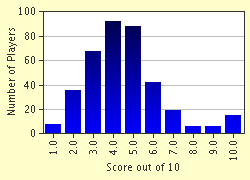Quiz Answer Key and Fun Facts
1. Born in 1451, Christopher was born into a family of limited means. It has been written, that as a young boy he used to hang out with mariners that were much older than he to learn something of their travels. Not much is written of Columbus' early work history. However, one thing that is known is that in 1467 he wrote a letter requesting work. To whom did he write to asking for work?
2. Columbus had a vast knowledge when it came to many things. In order for Columbus to travel the seas, he needed to know which two things that were, and still are, most important to sea traveling?
3. Was the idea to travel to the Far East Columbus' idea?
4. In 1485, Columbus traveled to Spain to seek out assistance with his exploration of the Far East. In Spain, he sought out the Duke of Medina Celi, Don Luis de la Cerda. He worked for a time for the Duke of Medina Celi. What is the amount of pay that Columbus received for his work?
5. In 1492, Queen Isabella had ruling power in Spain. She set about trying to get approval from her court re a sponsorship for Columbus. The Queen enticed her husband with the idea of riches from foreign lands, if they sponsored Columbus. What is the name of Queen Isabella's husband?
6. In 1492, Columbus' dreams of sea exploration finally came to light. He was granted use of three ships, The Nina, The Pinta, and The Santa Maria. On which date did Columbus set sail?
7. Columbus had several destination stops mapped out for this, his first voyage. What was his first stop on his route?
8. Columbus did not have an easy time with this voyage. He had a serious problem on December 24, 1492. On that date one of his vessels ran aground. What is the name of the ship that caused Columbus a severe problem?
9. Columbus, and his two remaining ships, left Hispaniola from the port of Samana Bay on January 16, 1493. The two ships were headed for the final destination stop prior to porting the ships. However, they were separated by a fierce storm in the middle of the Northern Atlantic Ocean. On which date were the two ships separated?
10. Columbus and the two captains received, as payment for the voyage, 2000 maravedis per month?
Source: Author
JuniorTheJaws
This quiz was reviewed by FunTrivia editor
Lanni before going online.
Any errors found in FunTrivia content are routinely corrected through our feedback system.


